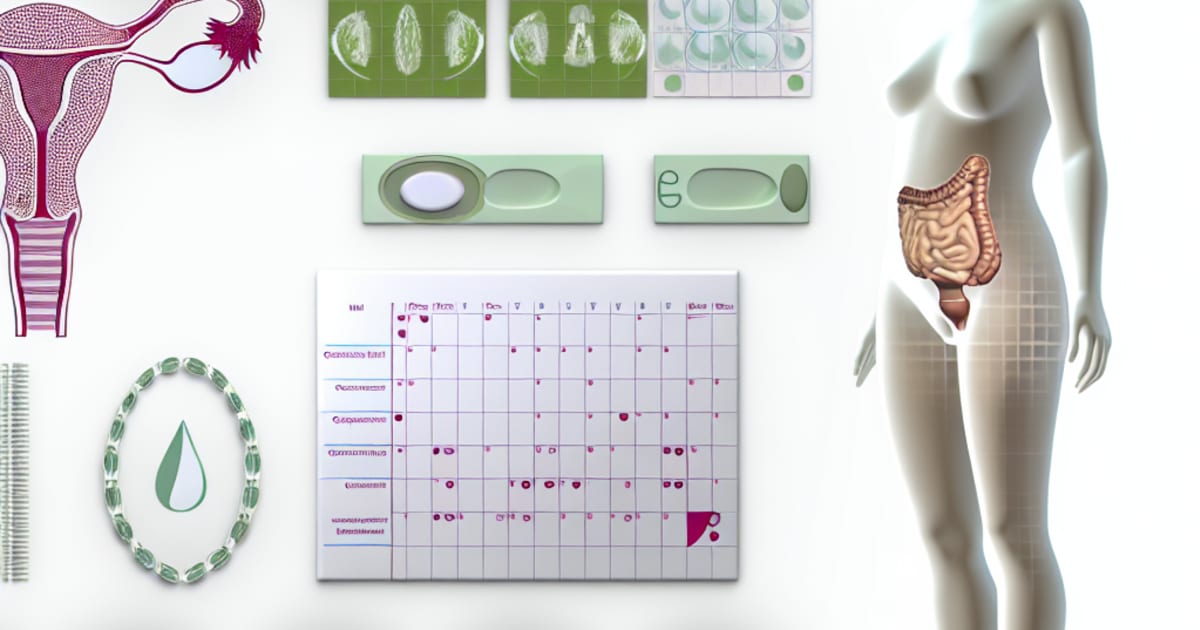
Understanding Ovulation Tracking Methods - A Comprehensive Guide
Introduction to Ovulation Tracking
Ovulation tracking is a method that women use to monitor their menstrual cycles to determine when they are most fertile. This is especially useful for women who are trying to conceive, as it helps them identify the best time to try for a baby. There are several ovulation tracking methods available, each with its own advantages and disadvantages.
Understanding the Menstrual Cycle
Before diving into the different ovulation tracking methods, it's important to understand the basics of the menstrual cycle.
The Four Phases of the Menstrual Cycle
The menstrual cycle can be divided into four main phases:
- Menstrual phase: This is the stage that most people are familiar with, it's when bleeding occurs. It typically lasts between 3 to 7 days.
- Follicular phase: This phase begins on the first day of menstruation and ends with ovulation. The body is preparing for ovulation and the lining of the uterus thickens in preparation for a potential pregnancy.
- Ovulation phase: This is the shortest phase, usually occurring in the middle of your cycle. It's when the ovary releases an egg for fertilization.
- Luteal phase: This phase begins after ovulation and lasts until the start of the menstrual phase. If the egg has not been fertilized, hormonal changes will trigger menstruation.
Importance of Tracking Ovulation
Tracking ovulation can be beneficial for several reasons:
- It can help you understand your body better and identify any irregularities in your cycle.
- For couples trying to conceive, knowing when ovulation occurs can significantly increase the chances of pregnancy.
- It can also be used as a natural method of birth control, although it is not as reliable as other forms of contraception.
Ovulation Tracking Methods
There are several ways to track ovulation. The right method for you will depend on your lifestyle, goals, and personal preferences.
Calendar Method
The calendar method involves tracking the length of your menstrual cycles on a calendar to predict when you'll ovulate. This method works best for women with regular cycles.
- Pros: It's a simple and cost-effective method.
- Cons: It's not very accurate, especially for women with irregular cycles.
Basal Body Temperature (BBT) Method
The BBT method involves taking your temperature every morning before you do anything else. A slight increase in temperature can indicate that ovulation has occurred.
- Pros: It's more accurate than the calendar method.
- Cons: It requires daily monitoring and can be affected by factors such as illness or lack of sleep.
Ovulation Predictor Kits (OPKs)
OPKs are over-the-counter tests that detect a surge in the luteinizing hormone (LH) in your urine, which occurs 24 to 48 hours before ovulation.
- Pros: They are easy to use and relatively accurate.
- Cons: They can be expensive, especially if you're testing over several months.
Cervical Mucus Method
This method involves tracking changes in your cervical mucus throughout your cycle. The mucus becomes clear and stretchy, like egg whites, around the time of ovulation.
- Pros: It's a natural and cost-effective method.
- Cons: It takes a bit of practice to accurately identify the changes.
Fertility Monitors
These are electronic devices that track multiple fertility indicators, such as hormone levels in urine and basal body temperature, to predict ovulation.
- Pros: They are highly accurate and provide a lot of detailed information.
- Cons: They can be expensive and require regular testing.
Conclusion
Ovulation tracking can be an effective way to understand your body better and increase your chances of conceiving. Remember, what works best for one person might not work for another. It may take some trial and error to find the method that works best for you. Always consult with a healthcare provider if you have any questions or concerns about your fertility.
